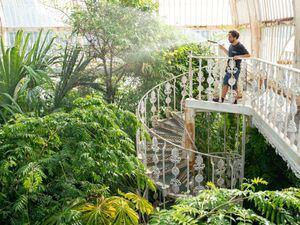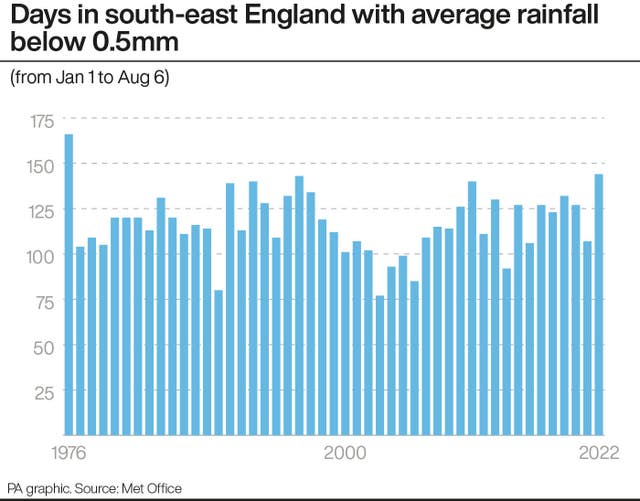Show gardens ‘prioritising which plants to look after’ during dry spell
Kew is ‘avoiding excessively using sprinklers during the day’ to reduce evaporation rates.

Britain’s most famous gardens are prioritising which plants to look after to cope with the “increasingly challenging” spell of dry weather.
Three of the 10 driest parts of England are Kew Gardens, in south-west London, the Cambridge University Botanic Garden and the RHS Garden Wisley, in Surrey.
These gardens, alongside seven other areas in the south of England, have recorded less than 250mm rainfall since November, provisional figures from the Met Office show.
But it is proving a struggle for horticulturalists, who are fighting to stop valued collections from dying out this summer.

At Kew Gardens, a Unesco World Heritage site, staff are prioritising plants that have high conservation value or historic importance – or which are extinct in the wild.
Richard Barley, Kew’s director of gardens, said this has been “increasingly challenging in recent weeks as we have seen very little rain”.
Protecting the 300-acre collection has been vital since the 40C heatwave last month and fears that the current mini heatwave may spark prolonged drought.
“We do so, for example, by opting not to irrigate the wider lawns and natural habitats, instead allowing them to brown off and rejuvenate after periods of rainfall, later in the year,” Mr Barley told the PA news agency.
Kew is also “avoiding excessively using sprinklers during the day” to reduce evaporation rates, Mr Barley added, and is using its own composted mulch and slow-release watering bags to improve growing conditions.

Mr Barley said: “We also have to look at the wider picture and consider how the landscape itself could change over the next 50 years to make it more suited to the changing climate.
“Part of this involves looking closely at our species selection criteria and identifying plants that may be better-adapted to warmer and drier climates zones such as the western USA and central America, the Mediterranean rim, Southern Africa, Australasia and Chile.
“Towards this end we are also looking to trial some lawn grasses that have the potential to fare better in warmer and drier summers.”
Meanwhile, at Cambridge University Botanic Garden, Mediterranean species such as lavender, cistus and phlomis well, are enjoying the current dry spell.
But Sally Petitt, its head of horticulture, told PA: “Other species, such as our handkerchief tree (Davidia involucrata) prefer moist conditions and these have struggled in recent weeks, defoliating much earlier than normal in an attempt to preserve themselves.
“Others, including Magnolia sprengeri ‘Diva’ have had their foliage scorched in the extreme heat. We are very conscious that plants from wetter regions such as Asian woodlands will be at far greater risk than Mediterranean plants.”
While “some plants will defoliate or die back prematurely” despite staff resorting to watering during the day as well as overnight, Ms Petitt hopes that “many” species will bounce back if normal rainfall returns in the autumn.
Birmingham Botanical Gardens is using similar strategies, including extra ventilation in glasshouses, shade netting and storing rain water in butts.





